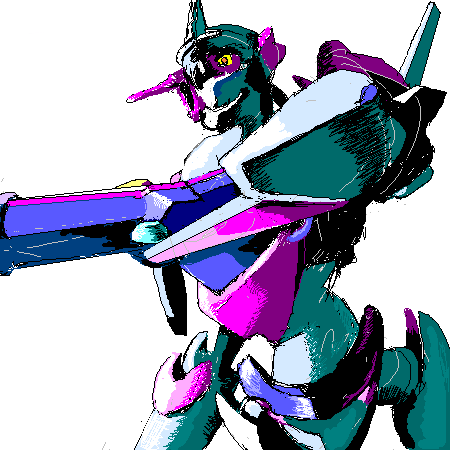Blog post from MTAA:
On Friday April 11, 2008 as part of its monthly curatorial project, art collective MTAA premiered "The Surrogates," a performance art piece exploring the nature of perceived identity and representation, credited to European-based art collective 0100101110101101.ORG (in absentia).
Presented at MTAA's OTO art space in Williamsburg, Brooklyn, the two-hour piece began at 7 p.m. with an open bar and velvet rope welcoming attendees in the hallway.
Inside the OTO space proper, two rows of two chairs (numbered 1-4) faced a low stage featuring a 4'x6' projection screen (center) and a small television monitor (stage right). Attendees entered the darkened room four at a time, their assigned seats facing a slightly delayed projection of themselves. The monitor revealed hallway activity in real time.
The attendees (now participants) were given no explanation of the piece, though they were invited do as they pleased within the space and to leave at their leisure. Re-entry was not permitted however, and those exiting the piece were immediately replaced by those next behind the velvet rope.
"The Surrogates" reaches its 180-degree apex via this text. Please note that while the Mattes (0100101110101101.ORG.) are credited as the authors of this seminal performance, MTAA designed, built and executed this work in its entirety.
Similar idea done in Dallas, early 90s:
Young artists fresh from school, let's call them the XYZ Collective, invite all their classmates and a large swath of the general public to a new, then-hot art space called the Hickory Street Annex. They show a room full of paintings, hung salon style. At the suggestion of area dealer Chris Byrne, they have "mediated" the show by installing spy cameras in some of the paintings.
After looking at the paintings and attending what seems to be a normal opening, viewers enter a second room of the exhibit through a black velvet curtain. In that room is a video projection of the people in the first room, viewing the paintings and chitchatting. The viewpoint rotates from one spycam to another, like a convenience store security camera.
Viewers were allowed to go back and forth between the rooms, so the dynamic was this:
Someone would enter the second room, see what was going on, and go back into the first room to tell other people. People in the second room could watch people in the first room being "wised up" to the trick, then peering *much* more closely at the paintings. Because the show drew a large crowd and there was a constant influx of new people through the door, at a given time only about half the people in the room knew they were participating in a social experiment.
To make it work, the artists had to be willing to use their own paintings as fodder, or props, since the real subject matter of the show was people gazing at other people on TV (half of whom were gazing back without seeing their observers).

